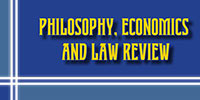Lehel SIMON
MA independent researcher (Entactex Pharma Research Project) Hungary
Simon L., 2022
lehel.alpar@gmail.com
UDC 376
DOI : 10.31733/2786-491X-2022-1-16-26
Keywords: Emotional autism, Cognitive autism, Interactive Deficit autism, Excited autism, Stereotypic autism
Abstract. To be interior in interactions or to be exterior in intraactions: how can we sense nature if we can’t even sense ourselves as objects? In this case we can be considered as autistic people and we must be living in a closed universe without “Nature”. We can express beauty of ourselves only if we can reflect to our mind, in itself. After this acting in process the World will be open for us.
Is it possible?
This mutual paradox is objectively measurable with a new test experiment. It represents the superject above the subject and object: the thing “Who” is able sense beauty as it surrounds us.
The spontaneity is at the same time constant and changing: if we are able to act out the Whiteheadian universality of the process whilst seeing ourselves from above then there is no contradiction between the happening and the experiencing of the process.
The Whiteheadian Philosophy could be a model of Ferenczian practice in interactive mutual Psychoanalysis, but the heterodox Psychoanalysis could provide practical Psychological background for Whiteheadian Theory.
Beauty is an acting in process of our mind opening from itself to ourselves, therefore the intraactive elements become interactive things. Ourselves reflected to our World is the “Eternal Other”: The Psychological source of Aesthetics is the Psychology of Whiteheadian “superject”.
References
Bagdy, E. (1986). Pressing, Lajos; Bugán, Antal; Zetényi, Tamás: “The MMPI test: theory and application”. Akadémiai Kiadó. Budapest. (in Hungarian).
Bálint M. (p. 159 in “The Primeval Break”) as well as the concept of transference by Melanie Klein (pp. 165-187 in “The Preverbal Realm”).
Bálint, M. The Primeval Break. Therapeutic Relations of Regression. Akadémiai Kiadó. Budapest. (in Hungarian).
DSM-IV. Textrevision. Animula Kiadó. Budapest, 1999. (in Hungarian).
Ervin L. Music – system theory – world order. pp. 179-183. (in Hungarian).
Ervin, L. (1986). Music – system theory – world order. Gondolat. Budapest. (in Hungarian).
Földényi, L. (1992). Melancholia. Akadémiai Kiadó. Budapest. (in Hungarian).
Foucault, M. (2000). Maladie mentale et psychologie – Naissance de la clinique Corvina Kiadó.
(in Hungarian).
Imre, H. (1984). Psychoanalysis as a Method. Gondolat. Budapest. (in Hungarian).
Kernberg, O. (1990) Borderline conditions and pathological narcissism. Az Autizmus Alapítvány Kapocs Kiadója. Budapest. (in Hungarian).
Klein, M. The Preverbal Realm. Psychoanalytical Case Studies. Akadémiai Kiadó. Budapest.
(in Hungarian).
Luis J. Martín Cabré. Ferenczi’s Contribution to the Concept of Countertransference (study in: Thalassa Online Archives).
Lyotard, J.-F. (1993). The Postmodern Condition. Századvég Kiadó. Horror Metaphysicae.
(in Hungarian).
Lyotard, J.-F. (2000). The Differend. Translation by Georges Van Den Abbeele. Manchester University Press.
Maurice R. (1987). Histoire de la psychologie. Akadémiai Kiadó. Budapest. (in Hungarian).
McLaren, A. (2002). Twentieth-century sexuality. Osiris Kiadó. Budapest. (in Hungarian).
Mérei, F. (2002). The Rorschach test, pp. 24-27. Medicina Könyvkiadó RT. Budapest.
(in Hungarian).
Nelson, V. E. (2002). Nelson textbook of paediatrics. Harcourt Brace & Company, Philadelphia. Melánia Kiadó. Budapest
Oeuvre of J. Lacan. Thalassa, 93/2. T-Twins Kiadás. (in Hungarian).
Pocket Lexicon of Mathematics. Editor-in-chief: Dr. Farkas Miklós, Műszaki Könyvkiadó, Budapest, 1972. (in Hungarian).
Popper, K. (1997). The Logic of Scientific Discovery, pp. 99-111. Europe Publishing House, Budapest. (in Hungarian).
Prigogine, I., & Stengers, I. (1995). La nouvelle alliance, metamorphose de la science. Akadémiai Kiadó. Budapest. (in Hungarian).
Sigmund, F. (1998). Wolf Man. Clinical case studies II. (in Hungarian).
Szondi, L. Cain, the lawbreaker, Moses, the lawmaker, pp. 195-205. Gondola 96 Kiadó.
(in Hungarian).
Textbook of Psychotherapy. Edited by: Szőnyi, Gábor and Füredi, János. Medicina Könyvkiadó RT, Budapest, 2000. (in Hungarian).
The Merck Manual – Diagnosis and Therapy. Editor in Chief: Robert Berkow, M.D. Melánia Kiadó, Budapest 1994.
Tringer, L. (2001). Textbook of Psychiatry. Semmelweis Kiadó. Budapest. (in Hungarian).
Whitehead, A. N. (1920). The Concept of Nature. Cambridge. Cambridge University Press.
Whitehead, A. N. (1978). Process and Reality (Corrected Edition). Free Press. ISBN 0029345804, 398 p. Gifford Lectures delivered at the University of Edinburgh during the session.
Wing, L. (1981) Sex ratios in early childhood autism and related conditions. Psychiatry Research, 5
http://livewithit.blog.hu/2008/08/30/az_aspi_olyan_mint_a_hagyma.
http://www.medterms.com/script/main/art.asp?articlekey=5650.
www.gyogyinfok.hu/magyar/fekvo/hbcs50/torzsek/BNOTORZS_20060701.xls.
